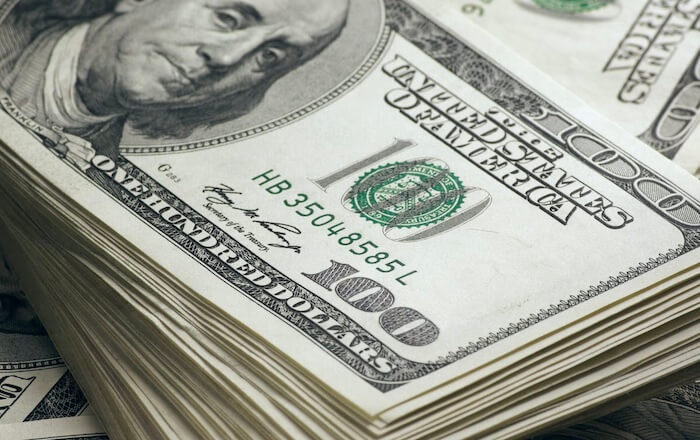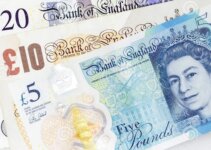Since Nigeria’s independence, the Naira’s relationship with the U.S. dollar and other foreign solid currencies has been a bitter experience. The Naira has continued to struggle against these currencies due to certain factors that primarily affect citizens.

The Naira black market rate, which differs from the CBN rate, is becoming the staple as the transaction is more accessible. Knowing the current exchange rate will provide you with a substantial opportunity to make informed decisions.
This page contains the current black market rate of USD to Naira currency rate.
Dollar To Naira Black Market Rate Today (April 24, 2024)
- 1 USD ($) = ₦750 (selling)
- 1 USD ($) = ₦745 (buying)
Dollar to Naira Exchange Rates Over The Past One Week
Date/ Selling Rate/ Buying Rate
- Jan 31, 2023/ ₦754/ ₦748
- Jan 30, 2023/ ₦752/ ₦748
- Jan 29, 2023/ ₦750/ ₦748
- Jan 28, 2023/ ₦750/ ₦745
- Jan 27, 2023/ ₦753/ ₦748
- Jan 26, 2023/ ₦753/ ₦748
- Jan 25, 2023/ ₦752/ ₦748
- Dollar To Naira Black Market Rates Today
- Pounds To Naira Black Market Rates Today
- Euro To Naira Black Market Rates Today
The dollar-to-naira black market is also known as the naira parallel market. It’s the street market rate and only sometimes in compliance with the institutional rules. The black market rate is frequently higher than the CBN rate.
Most people can’t seem to find the current black market rate because of the ban placed on AbokiFX. This popular and reliable website curates the price of the Naira against foreign currencies.
The current exchange rate for a dollar to Naira in the parallel market varies due to specific factors.
Dollar To Naira Exchange Rate History
Nigeria, the giant of Africa, once enjoyed a booming economy. The past few years have seen the economy struggle massively and have gotten worse. The situation has hugely affected the Naira, and the value has depreciated over time.
It’s sad to imagine the currency, which was once more substantial than the United States dollar, now can’t stand against it. Over the past 50 years, the Naira has lost its value not only against the U. S Dollar but other foreign currencies.
Let’s trace how the Nigerian currency fluctuated against the United States dollar over the past 51 years[1972-2022]. However, before then, let’s see how the Naira performed last year.
Year 2022
- January = 415.5
- February = 415.6
- March = 416.1
- April = 415.6
- May = 415.8
- June = 417.0
- July = 423.2
- August = 426.9
- September = 434.7
- October = 439.3
- November = 443.5
- December = 449.7
Below is the average value of the Naira between [1972-2022]. The table shows the improvement and decline of the Naira to the Dollar over this period.
Year # Per USD Year # Per USD Year # Per USD
1972 0.658 1993 17.30 2014 170-199
1973 0.658 1994 22.33 2015 199-300
1974 0.63 1995 21.89 2016 390-489
1975 0.616 1996 21.89 2017 478
1976 0.62 1997 21.89 2018 360
1977 0.647 1998 21.89 2019 305
1978 0.606 1999 21.89 2020 361
1979 0.596 2000 85.89 2021 413
1980 0.550 2001 99-106 2022 436
1981 0.61 2002 109-113
1982 0.673 2003 114-127
1983 0.724 2004 127-130
1984 0.765 2005 132-136
1985 0.894 2006 128.50-131.80
1986 2.02 2007 120-125
1987 4.02 2008 115.50-120
1988 4.54 2009 145-171
1989 7.39 2010 148.21-154.8
1990 7.39 2011 151.05-165.1
1991 8.04 2012 155.09-161.5
1992 9.91 2013 153.21-162.9
A brief History Of The U.S. Dollar
The United States Dollar is the national currency of the United States of America. The ISO code USD represents it, often denoted as US$. It’s the standard currency and the most used currency for international transactions.
The history of the United States dollar can be traced back to the generation of the Founding Fathers of the United States of America. They began the movement to develop a national currency based on the Spanish silver dollar used in the North American colonies of the U.K. for a century before the United States’ independence.
The United States dollar was established as the nation’s standard unit of money by the new Congress’s Coinage Act of 1972. The first dollar notes were published to fund the 1861 Civil War, and the legal tender was first published in 1862. Afterward, in 1869, a standardized system for printing dollar notes was developed
The U.S. Federal Reserve, founded in 1913 as the country’s central bank, initially issued the Dollar in the form of Federal Reserve notes. The currency is presently the global primary reserve currency used by governments worldwide for international trade. The Federal Reserve body is also responsible for ensuring there’s enough circulation of money.
The Bretton Woods Agreement of 1944 first recognized the U.S. dollar as a global reserve currency, and it went on to become the most important one. It was initially exchanged as a coin with a face value of its weight in gold or silver before it began trading as a paper note that could be redeemed for gold.
Why Is The U.S. Dollar So Strong?
The United States dollar is one of the strongest currencies globally, and it’s currently at its highest level in two decades against other major currencies. The currency is vital because it’s in high demand. Generally, when a country has strong economic growth with low debt, money will be in high demand in the global market.
The U.S. economy is strong and healthier than most other reserves. The Federal Reserve also keeps raising interest rates, so the Dollar will remain strong unless the Federal reserves adjust its policy.
Furthermore, the Dollar has a special status as the world’s reserve currency. So most investors see it as the safest asset to own when bond and stock markets turn volatile. Government and financial bodies also use dollars for international transactions.

